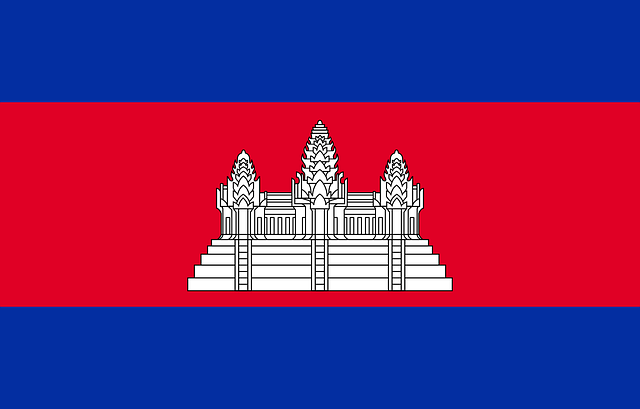
A 10th-century sandstone sculpture of the Hindu god Rama returned to Cambodia decades after it was stolen from a temple during the kingdom’s civil war.
Denver Art Museum had acquired the 62-inch-tall torso from the Doris Weiner Gallery in 1986, which was stolen in the 1970s from the Koh Ker temple site. The museum says, at the time, it had no idea that the statue had been stolen. That only came from discussions with delegates from Cambodia.
Getting ready for the start of the handover ceremony of the Torso of Rama returned to Cambodia by @DenverArtMuseum. pic.twitter.com/rwikqspV8x
— Jay Raman (@ramanjr) March 28, 2016
The quiver on the statue’s back suggested that it had resided in the eastern gopura of the temple site. This section of the temple was home to two ferocious monkey kings, Valin and Sugriva, now in the National Museum of Cambodia.
But it still misses its head and other body parts. The kingdom of Cambodia continues to appeal to international art galleries and museums to return the missing limbs.
Documents sent to the Denver museum with measurements of the feet in a pedestal matched the legs of the torso. This confirmed that the statue had not left Cambodia legally. A chainsaw and hammer had detached the feet.
Cambodia’s Secretary of State, Chan Thani, thanked the Denver Museum of Art for voluntarily returning the Rama sculpture. And for its sensitivity towards Cambodian culture.
The statue dates back to the Khmer Empire, a Buddhist-Hindu dynasty famous for its temples and cities, including Cambodia’s Angkor Wat complex.
Authorities had located the pedestal which matched the Torso of Rama at Koh Ker’s Prasat Chen temple in 2012.
The Torso of Rama is the seventh statue to return to Cambodia from abroad.
On May 3, 2013, the Metropolitan Museum of Art in New York announced that two statues would return to Cambodia. The “Kneeling Attendants” – also called Pandavas – had been a feature of the museum’s Asian Wing for almost 20 years.
Mahabharata is a Sanskrit epic which depicts a wrestling match. Four other brothers, the Pandavas, had teamed with Duryodhana to wrestle Bhima. Observing the wrestling was the god Krishna and his brother, Balarama.
Like the Torso of Rama, thieves had severed the feet from their pedestals.
A year later and the Norton Simon Museum in California had agreed to return a looted statue to the kingdom of Cambodia. The 10th-century sandstone statue known as the “Temple Wrestler” or “Bhima” had been on display since 1976.
Archaeologist Tess Davies wrote a vivid and compelling account about the return of the Duryodhana statue to Cambodia in 2014.
The French protectorate absorbed Cambodia in 1863 and lasted until 1953. Colonialism shaped and dominated the scholarship of Cambodia’s history and culture. Academic classes on Cambodian architecture and history were taught by French professors. The French also helped establish the National Museum of Cambodia. Others argue that the looting of Cambodia’s cultural history began in this period. The civil war had served to extend an ongoing problem.
Against the backdrop of the Vietnam War, civil war and political coups, the Communist Party of Kampuchea (CPK), also known as Khmer Rouge, seized power in 1975.
Pol Pot’s utopianism resulted in the murder of almost two million Cambodians in just three years. Under the ‘Year Zero’ directive, schools closed, religion was banned and money became worthless. Executions in the ‘killing fields’ involved torture, starvation and disease.
The Cleveland Museum of Art returned a statue of the Hindu monkey god Hanuman to Cambodia last year. It acquired the statue in 1982 from a now deceased New York art dealer.
A French museum returned the head of a 7th century statue to Cambodia in January 2016. The statue which depicts the Hindu gods Vishnu and Shiva had its head stolen in 1886. It had stood in the Phnom Da temple in southern Takeo province prior to the theft. In Phnom Penh, a lavish ceremony saw the stolen head reattached.
The Norwegian collector Morten Bosterud returned two stone statues from the Angkor period to Cambodia in October 2015. Both statues were looted during the civil war and spent the past three decades in Europe. A ceremony in Phnom Penh saw Bosterud return a ninth century head of the god Shiva and a late 12th to early 13th century male divinity head.
